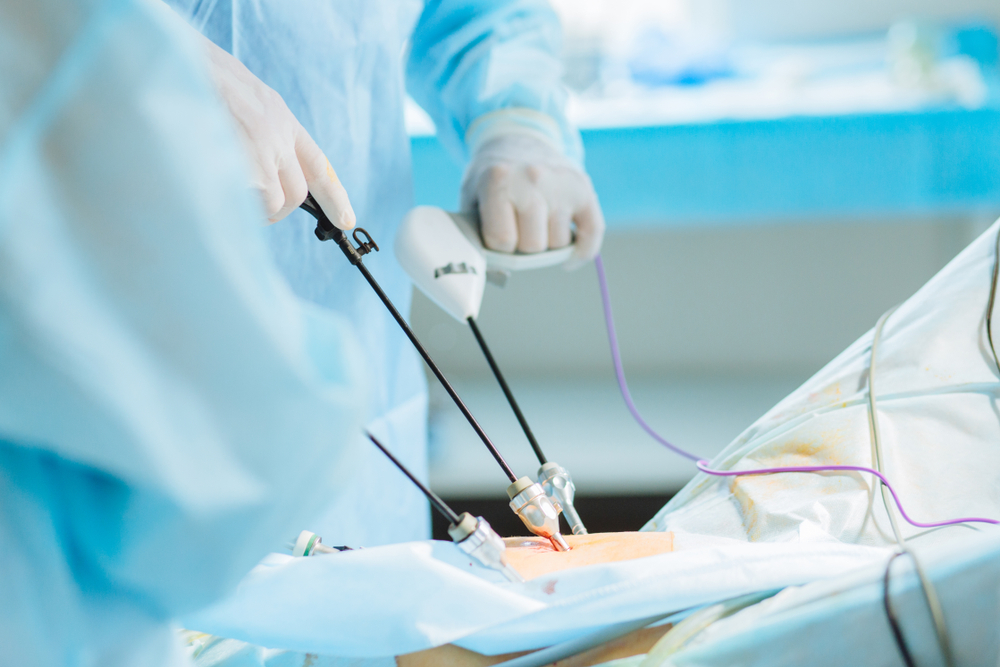Navigating the realm of fertility treatments can be both emotionally and financially challenging. Among the array of procedures available, laparoscopy stands out as a pivotal tool in diagnosing and treating various fertility issues.
However, understanding the financial aspects of undergoing laparoscopy, particularly in Kazakhstan, is essential for individuals embarking on this journey. The cost of laparoscopy in Kazakhstan is influenced by several factors, including the healthcare facility’s location, reputation, and the complexity of the procedure.
In this informative guide, we delve into the intricacies of laparoscopy cost in Kazakhstan, shedding light on the average expenses involved and offering insights to help individuals make informed decisions about their fertility treatment journey.
By unraveling the mysteries surrounding laparoscopy costs, we aim to empower individuals with the knowledge needed to navigate this aspect of their fertility care with confidence and clarity.
What is Laparoscopy?
Laparoscopy, also known as minimally invasive surgery or keyhole surgery, is a medical procedure used to examine and treat the organs inside the abdomen. It involves making small incisions in the abdominal wall through which a laparoscope, a thin tube with a camera and light source, is inserted. This allows surgeons to visualize the pelvic organs, such as the uterus, fallopian tubes, and ovaries, without the need for large incisions. Laparoscopy is commonly used in gynecology for diagnosing and treating conditions such as endometriosis, ovarian cysts, and infertility issues. Compared to traditional open surgery, laparoscopy offers several benefits, including shorter recovery times, reduced pain, and lower risk of complications.
Types of Laparoscopy
There are several types of laparoscopy procedures, each serving different diagnostic or therapeutic purposes in the field of medicine:
- Diagnostic Laparoscopy: This type of laparoscopy is primarily used for diagnostic purposes, allowing surgeons to visually examine the abdominal and pelvic organs for abnormalities such as endometriosis, pelvic inflammatory disease, or adhesions.
- Operative Laparoscopy: Operative laparoscopy involves using specialized instruments inserted through small incisions to perform surgical procedures on the abdominal or pelvic organs. This can include procedures such as removing ovarian cysts, treating ectopic pregnancies, or performing tubal ligation.
- Laparoscopic Hysterectomy: In this procedure, the uterus is removed using laparoscopic techniques. It offers the advantage of smaller incisions, reduced blood loss, and faster recovery compared to traditional open hysterectomy.
- Laparoscopic Myomectomy: This procedure involves removing uterine fibroids while preserving the uterus. It can be an option for women with symptomatic fibroids who wish to retain their fertility.
- Laparoscopic Ovarian Drilling: This procedure is commonly used in the treatment of polycystic ovary syndrome (PCOS) to improve ovulation. It involves making small punctures in the ovaries using a laser or needle to reduce the number of follicles and restore ovulatory function.
- Laparoscopic Endometriosis Surgery: Laparoscopic surgery is often used to diagnose and treat endometriosis, a condition where tissue similar to the lining of the uterus grows outside the uterus. Surgical techniques may involve excision or ablation of endometrial lesions to alleviate symptoms and improve fertility.
These are just a few examples of the types of laparoscopy procedures commonly performed. The specific type of laparoscopic procedure recommended will depend on the patient’s diagnosis, symptoms, and treatment goals.
The Laparoscopy Process
The Laparoscopy Process typically involves several key steps:
Preoperative Preparation: Before the procedure, the patient undergoes preoperative evaluation, which may include blood tests, imaging studies, and a physical examination. Patients are usually advised to refrain from eating or drinking for a certain period before the surgery.
Anesthesia Administration: Once in the operating room, anesthesia is administered to ensure the patient remains comfortable and pain-free throughout the procedure. The type of anesthesia used (general anesthesia or local anesthesia with sedation) depends on the specific circumstances and the patient’s medical history.
Incision and Trocar Placement: Small incisions, typically ranging from 0.5 to 1.5 centimeters in length, are made in the abdomen. Trocars, specialized instruments used to create a passage for surgical instruments, are inserted through these incisions. A laparoscope, along with other surgical instruments, is then introduced into the abdominal cavity through the trocars.
Visualization and Exploration: The laparoscope, equipped with a camera and light source, provides a magnified view of the pelvic organs on a monitor. The surgeon carefully examines the uterus, fallopian tubes, ovaries, and surrounding structures for any abnormalities, such as endometriosis, adhesions, or ovarian cysts.
Surgical Intervention: Depending on the findings, surgical interventions may be performed during the laparoscopy. Common procedures include removal of ovarian cysts, lysis of adhesions, treatment of endometriosis, and tubal sterilization or ligation. Specialized instruments, such as graspers, scissors, and energy devices, are used to perform these procedures.
Closure and Recovery: Once the surgical objectives are achieved, the instruments are removed, and the incisions are closed with sutures or surgical glue. Patients are monitored in the recovery area until they awaken from anesthesia and are stable to be discharged home. Most patients can resume normal activities within a few days to a week, although strenuous activities may need to be avoided for a longer period.
Postoperative Follow-Up: Patients typically have a follow-up appointment with their surgeon to assess their recovery and discuss any further treatment or management plans. Any concerns or complications should be promptly reported to the healthcare provider for appropriate evaluation and management.
Factors Influencing Laparoscopy Cost
- Hospital Fees: The fees charged by the hospital or surgical facility where the laparoscopy is performed constitute a significant portion of the overall cost. These fees typically include the use of operating rooms, equipment, and post-operative care.
- Surgeon’s Fee: The experience and expertise of the surgeon performing the laparoscopy can impact the cost. Highly skilled surgeons may charge higher fees for their services.
- Anesthesia Costs: Anesthesia is administered to ensure the patient remains comfortable and pain-free during the procedure. The type of anesthesia used and the duration of its administration can influence the overall cost.
- Diagnostic Tests: Prior to undergoing laparoscopy, patients may need to undergo certain diagnostic tests, such as blood tests or imaging studies, to assess their fertility issues. These tests may incur additional costs.
- Medications: Post-operative medications, including pain relievers and antibiotics, may be prescribed to manage pain and prevent infections. The cost of these medications should be factored into the overall expense.
- Additional Procedures: In some cases, laparoscopy may be combined with other fertility procedures, such as hysteroscopy or tubal ligation reversal. The inclusion of these additional procedures will impact the total cost.
Laparoscopy Cost in Kazakhstan
The Cost of laparoscopy in Kazakhstan can vary depending on several factors, including the location, the reputation of the healthcare facility, and the complexity of the procedure. On average, the cost of laparoscopy in Kazakhstan ranges from approximately $500 to $2000 USD. This cost typically covers expenses such as hospital fees, surgeon’s fees, anesthesia costs, diagnostic tests, medications, and any additional procedures performed during the laparoscopy. Patients are advised to research and compare different healthcare providers to find the best combination of quality and affordability. Additionally, checking insurance coverage and exploring financing options can help manage laparoscopy costs effectively. Consulting with healthcare professionals and discussing financial concerns openly can ensure a smooth and transparent experience throughout the process.
Tips for Managing Laparoscopy Costs
- Research Healthcare Providers: Take the time to research and compare different healthcare providers offering laparoscopy services in Kazakhstan. Consider factors such as reputation, experience, and patient reviews.
- Inquire About Package Deals: Some healthcare facilities may offer package deals that include the cost of the procedure, hospital fees, surgeon’s fees, and post-operative care. Inquire about these packages to determine if they offer cost savings compared to paying for each component separately.
- Check Insurance Coverage: If you have health insurance, check whether laparoscopy is covered under your plan. Understanding your insurance coverage can help you anticipate out-of-pocket expenses.
- Explore Financing Options: If you’re unable to afford the upfront cost of laparoscopy, explore financing options such as payment plans or medical loans. Many healthcare facilities offer flexible payment options to help make treatment more affordable.
Conclusion
Laparoscopy is a valuable tool in the diagnosis and treatment of fertility issues, and understanding the associated costs is essential for informed decision-making. By considering the factors influencing laparoscopy costs in Kazakhstan and exploring strategies for managing expenses, you can embark on your fertility journey with confidence. Remember, your health and well-being are invaluable, and investing in quality care is worth every penny. At Med Fertility, we’re here to support you every step of the way.












